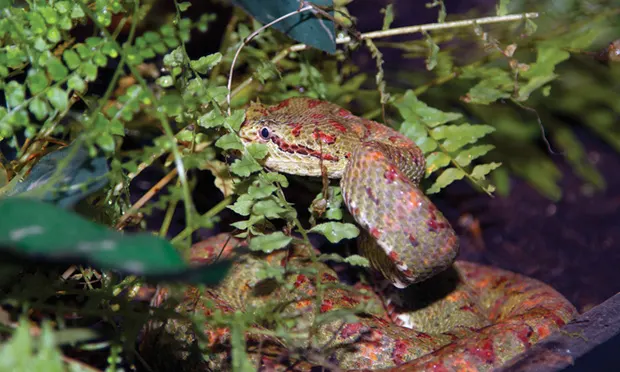Relevance of Anatomy in High-Quality Medicine
Adolf K. Maas, III, DVM, DABVP (Reptile & Amphibian), CertAqV, ZooVet Consulting, Bothell, Washington

In the Literature
Yaw TJ, Mans C, Johnson SM, Doss GA, Sladky KK. Effect of injection site on alfaxalone-induced sedation in ball pythons (Python regius). J Small Anim Pract. 2018;59(12):747-751.
The Research …
Differences in pharmacologic activity and effect in reptiles as a result of injection location has been anecdotally observed and assumed, and mention has been made in the literature that some pharmaceuticals should be administered in the cranial body to avoid rapid clearance or toxic renal concentration via the renal portal or hepatic portal systems.1,2 This is the first published report that confirms anesthetic agents can have differing effects based on location of injection.
Alfaxalone is a lipophilic neuroactive steroid that acts as a potent γ-aminobutyric acid agonist. It has been found to have reliable anesthetic results in a number of nontraditional species, including herptiles,3-6 and is primarily cleared via cytochrome P-450 metabolism in the liver and CNS. This study, in contrast to the previously mentioned studies,1,2 evaluated the differences in depth and duration of anesthesia observed in snakes that were injected in different regions of the body. Snakes that were injected in the cranial third of the body had an overall deeper plane of anesthesia and for a longer duration as compared with snakes that were injected in the caudal third.
This difference is most likely a result of the first-pass effect of the agent through the hepatic portal system when injected caudally, confirming that the anatomy of these species can affect pharmacologic effects.
… The Takeaways
Key pearls to put into practice:
A functional knowledge of anatomic differences is critical to high-quality, effective herptile medicine.
Specific tissue clearance of pharmacologic agents should be considered when selecting drugs, dosages, and administration route and location in reptiles.
Anatomy and physiology must be considered in all cases of nontraditional species medicine and therapeutics.
You are reading 2-Minute Takeaways, a research summary resource presented by Clinician’s Brief. Clinician’s Brief does not conduct primary research.